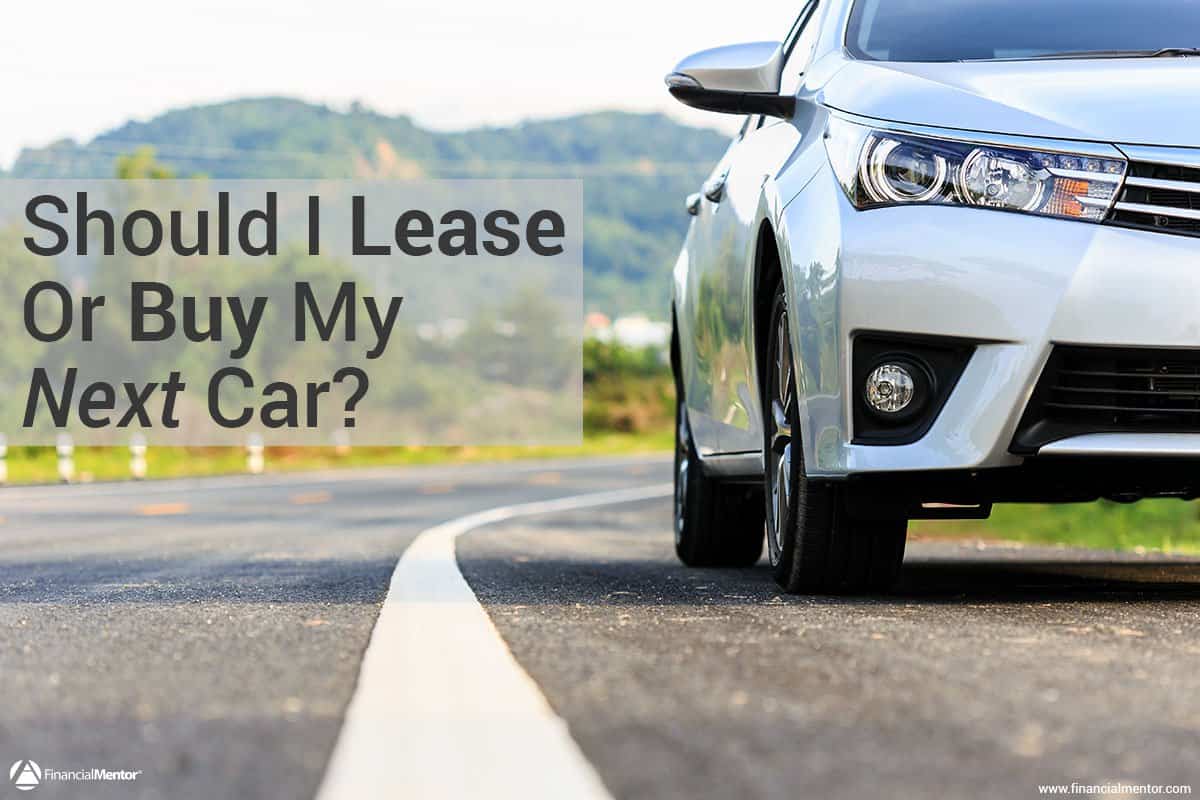For many business owners, driving a “company vehicle” is a required perk. In order to qualify for this perk, the vehicle must be driven more than 50% for business purposes. Believe it or not, you are required to keep track of your mileage when you drive. You need to document every mile, whether the miles are personal (e.g. driving from your home to your place of business) or the miles are business (e.g. driving between your business locations or to a meeting). If you are ever subject to an IRS audit, you would need to produce a log detailing all of the miles you drove during the year. Sound cumbersome? Yes it is, but this is the only way to support your company’s deductions relating to your business vehicle. Fortunately, there are many apps available to assist you in maintaining an accurate record of the miles driven.
OK, let’s say you can get past the mileage requirement. Should your company lease or buy the vehicle? Prior to the Tax Cuts & Jobs Act, assuming you were going to drive an expensive vehicle, the answer was almost always lease. Why lease? Because the monthly deduction you would take for the lease payment almost always exceeded the amount of depreciation you could take on a “luxury” vehicle. For 2018, the tides have turned with respect to vehicle depreciation. In this article, we will explore the new vehicle depreciation rules and look at a real life example to compare the numbers in a “lease” versus “buy” analysis.
Before we get into the tax aspects of this analysis, let’s first take a look at the nontax considerations in a lease versus buy situation.
Some of the benefits of leasing a vehicle are as follows:
- The lease payments are usually lower than that in a vehicle loan.
- You get to drive a new car every three or four years.
- You are always protected by a warranty.
- You don’t have to worry about selling or trading in your vehicle.
Sounds good so far, right? But there is also one big drawback with a vehicle lease, and that is because most leases come with a restriction on the number of miles that you can drive over the lease term. If you exceed this limit, the cost for additional miles can start adding up quickly. You have to determine how many miles you actually will drive during a typical year in order to decide whether a lease is a good option for you. If it is, then you can proceed to the tax analysis of your decision.
When your company leases a vehicle, it can deduct the monthly lease payment. There is no limit on the amount that can be deducted under a lease arrangement, provided that the vehicle is primarily driven for business purposes (again, more than 50%). Alternatively, if your company purchases a vehicle, it can take depreciation deductions for the cost of the vehicle. Under the old tax law, the annual depreciation deductions were limited as follows: Year 1 – $3,160, Year 2 – $5,100, Year 3 – $3,050, Year 4 and later – $1,875 and Bonus Deprecation in Year 1 – $8,000. Under the new tax law, the annual depreciation deductions are limited as follows: Year 1 – $10,000, Year 2 – $16,000, Year 3 – $9,600, Year 4 and later – $5,760 and Bonus Deprecation in Year 1 – $8,000. As you can see, the luxury vehicle depreciation limits have been greatly enhanced under the new tax law, so much so, that you now have to explore whether a purchase provides a better tax advantage.
The chart below summarizes the new rules:
| Year 1 | Year 2 | Year 3 | Year 4 | ||
| 2017 | Allowable Depreciation | $3,160 | $5,100 | $3,050 | $1,875 |
| 2018 | Allowable Depreciation | $10,000 | $16,000 | $9,600 | $5,760 |
| Above amounts to be indexed for inflation for tax years after 2018. |
Let’s take a look at an example. Suppose you have had your eyes on a BMW X5 sports utility vehicle. Per the BMW website, that vehicle with a basic “convenience” package would cost $63,490. For that same vehicle under a lease, the BMW website lists the X5 model at $699 per month with $5,124 due at signing for a three year lease. The down payment is essentially an up-front lease cost, so you have to amortize that cost over your lease term, which adds $142 to your monthly lease cost. For analysis purposes, we will use $841 as our total lease cost ($699 + $142). Now, let’s compare the annual tax deductions:
Lease |
Buy |
|
| Year 1 | $10,092 | $18,000* |
| Year 2 | $10,092 | $16,000 |
| Year 3 | $10,092 | $9,600 |
| Total | $30,276 | $43,600 |
| * Includes $8,000 bonus depreciation |
As you can see, the new tax law makes purchasing a vehicle a more realistic option. In fact, in our BMW X5 example, you would garner approximately $13,324 in additional deductions over a three year period. At a top federal tax bracket of 37%, these additional deductions might save you $4,930 in federal income tax. Of course, not everyone can afford a BMW X5 sports utility vehicle or falls within the top federal income tax bracket. Even so, the new tax law loosens the depreciation limitations on vehicles and makes the “lease” versus “buy” analysis a necessity.
There is one more favorable change with respect to vehicle depreciation that was provided by the Tax Cuts and Jobs Act. That is, if you purchase a vehicle that weighs over 6,000 pounds, you are entitled to take 100% bonus depreciation on it – something like a Chevy Tahoe or a GMC Yukon. This means that you can write the entire cost of the vehicle off in the year of purchase. Almost sounds too good to be true! This favorable tax provision almost always “tips the scale” in favor of a purchase over a lease. A quick Internet search will provide you with a listing of all vehicles that weigh over 6,000 pounds.
There are a few other caveats that are worth mentioning with respect to this area. First, as mentioned at the beginning of this article, we cannot stress enough the importance of tracking your business and personal mileage when you drive your company vehicle. This is the only way you can support your company’s business deduction for the vehicle costs. That being said, there will almost always be a “personal use” add back to your wages (or treated as a guaranteed payment in the case of a partnership). Unless your vehicle is driven 100% for business purposes (which is unlikely if you take the vehicle from your home to the business every day you work), there will be an amount that you need to pick up as income for driving the company vehicle. Finally, in the case of a lease, there is a “lease inclusion value” that must be added back to the company’s taxable income. This is really nothing to worry about – the lease inclusion value is typically a very small number and will minimally affect your taxes. All of these items are things that your accountant will address with you at tax time – but the record keeping requirement is always on you.
Now that we have covered the tax basics, it’s time to start hunting for your next company vehicle. In the words of former tennis champ Andre Agassi: “image is everything!”









